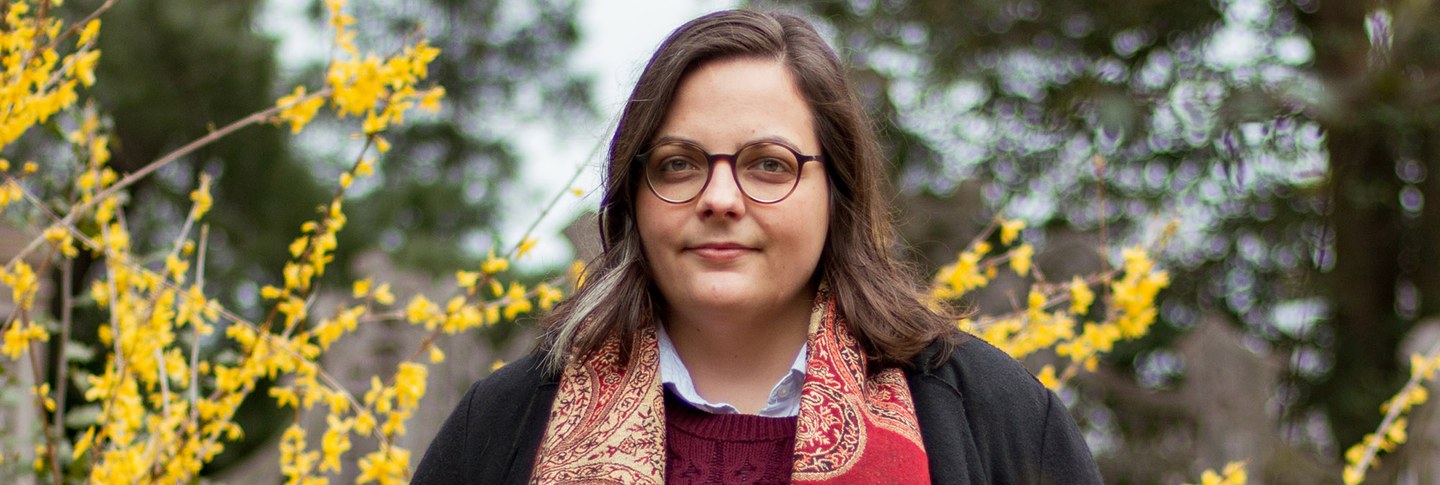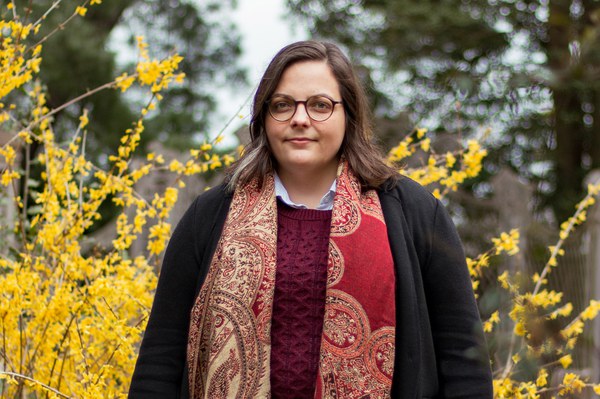Alexandra Vukovich, a researcher in history at the University of Cambridge, is a fellow in Byzantine Studies at Dumbarton Oaks. Her recent research report, “Byzantine Imitation Coins in Context: The Coins of Early Rus (10th–11th c.),” examined the commingling of Byzantine and local symbolic landscapes in the gold and silver coinage of the princes of Rus.
Q&A with Alexandra Vukovich
How do you classify the imitation coinages issued by the princes of Rus?
We call it Byzantine imitation coinage because it borrows very heavily from the Byzantine symbolic landscape that appears on Byzantine coins, but the earliest coinage of the princes of Rus isn’t really coinage in the way we typically understand it. First of all, it’s not one distinct coinage. There are essentially three types that are circulating at the same time. The first, which is the most well-known, is the coinage of Prince Vladimir Sviatoslavich and his immediate successors in Kiev, which combines Byzantine political forms and religious symbols, such as the figure of Christ, with local symbols, like the princely heraldic sign.
Then you have the coinage of Prince Iaroslav Vladimirich, which depicts the prince as a military saint by analogy. This coin has actually been found throughout the European northeast, so we know it didn’t just remain in a circumscribed area like Kiev. The third imitation coin type is a pure imitation of the Byzantine miliaresion, a type of silver coin. These were largely made in the southern area of Rus, and end up traveling northward into Scandinavia, where they were imitated again. What’s really interesting, generally speaking, is that there’s no cohesion among these three types of coins, which suggests that we’re looking at an area that’s still fairly disparate in the late 10th and early 11th centuries, with a lot of regional autonomy.
How do these coins embody competition in Rus—between different princes, for instance, vying for supremacy?
It’s difficult to say exactly, using just the coins. You need to juxtapose them with narrative—the Primary Chronicle, for example, which is a history of Rus comprising disparate texts that were compiled at various points in the 11th century or later. Coins are a great way of self-identifying; they’re also a way of establishing authority. I don’t want to suggest that these coins have an economic authority, because that comes much later, but they do have a sort of ideological authority—which gets expressed in religious terms—and a territorial authority, particularly around Kiev.
That’s important because the 10th and 11th centuries are a period of diversification for Rus. Distinct groups start appearing, issuing from the Viking diaspora, and these coins are the first markers of local self-identity (within a Byzantine framework, of course) that appear. I think they speak to a proliferation of economic opportunities, in terms of trade with the Byzantine world and participation in Byzantine politics, particularly Byzantine warfare—the Rus are recorded as mercenaries in the Byzantine army, and they appear in several military campaigns that stretch all the way to Syria. The coins reflect the transformation of this region into an area where competing opportunities sought to participate in a thriving trade and diplomatic culture with the Byzantine Empire, which may have been the impetus to begin forming state-like structures across the area of Rus.
What are some of the images or trends that constitute the “local” symbolic landscape you discussed?
Particularly with the coins of Vladimir, the legend is in Slavonic, so already you can tell which language has current usage. You also have the image of Vladimir on his throne. Now, enthronement isn’t part of Byzantine practices of power; it’s very likely something that comes from the Germano-Scandinavian heritage of the Rus. This enthronement scene is coupled with a heraldic symbol that looks like a trident. A lot of ink has been spilled trying to figure out where this trident comes from—is it something inherited from the steppe nomads, for instance? But whatever its origins, it’s clearly a local symbol.
The coins of Iaroslav aren’t as direct; I’d say their symbols have more to do with analogy. The analogy between the prince and warrior saints is a comparison that takes hold of Rus sensibilities early on, even before a similar phenomenon occurs in Byzantium. In the 12th century especially this comes to the fore in the north of Rus, where a lot of princes choose to be depicted alongside warrior saints. This trend may reflect the skirmishes and scrambles for territory that occurred with the expansion of the Rus principalities, as well as the competition for the throne of Kiev and other regional centers.

